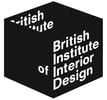Part M Building Regulations are a cornerstone of the UK's construction industry, ensuring that buildings are accessible and usable for everyone. These regulations cover various aspects of construction and design. They aim to provide equal access and foster inclusivity within public and private buildings.
In this article, we will share everything you need to know about Part M Building Regulations, breaking down their key components and how they influence the design and construction of buildings across the UK. By understanding these regulations, architects, builders and property owners can create environments that are not only compliant but also welcoming to all members of society.

What Are Part M Building Regulations?
Part M Building Regulations are a set of statutory requirements in the UK designed to ensure that buildings are accessible and usable for everyone, including people with disabilities. These regulations cover a wide range of design and construction aspects, from entrances and doorways to circulation spaces and sanitary facilities. By adhering to them, developers, architects and builders contribute to creating a more equitable and accessible environment in both public and private buildings.
Why Part M Building Regulations Are Important
Part M Building Regulations serve a critical role in shaping an inclusive society by ensuring buildings are accessible to all, regardless of physical abilities. These regulations recognise the diverse needs of the population, aiming to remove barriers that can prevent individuals with disabilities from accessing and using buildings comfortably and independently.
Compliance with Part M is not just about adhering to legal standards; it reflects a commitment to equality and to enhancing the quality of life of people with disabilities by providing them with the same opportunities and conveniences as the rest of the population. Moreover, these regulations encourage innovation and thoughtful design in the construction industry, pushing for environments that cater to a broader range of human needs. In essence, Part M Building Regulations underscore the importance of creating spaces that uphold the values of inclusivity, safety and dignity for everyone in the community.

Key Components of the Part M Building Regulations
Part M Building Regulations detail specific requirements that must be met in the design, construction and alteration of buildings to ensure they are accessible to people with disabilities. Below, we will explore the key components of these building regulations, including accessibility in design, dwelling entrances, circulation within buildings and the provision of accessible sanitary facilities.
Accessibility in Design
Accessibility in design is a foundational concept within the Part M Building Regulations, as it emphasises the importance of creating spaces that are easily navigable and usable by individuals with various disabilities. This encompasses a broad range of design considerations, from ensuring that doorways are wide enough to accommodate wheelchairs to the strategic placement of visual aids for those with visual impairments. By integrating these principles from the outset, buildings can better serve the needs of a diverse population, enabling everyone to access and enjoy the spaces without facing unnecessary barriers.

Dwelling Entrance
Part M Building Regulations stipulate that entrances to public buildings must be designed thoughtfully to accommodate individuals with different needs. This includes providing level or ramped access, ensuring doorways are of adequate width for wheelchair passage, and minimising threshold heights to eliminate potential tripping hazards. These considerations make the transition from outdoor to indoor spaces smoother and more accessible.
Circulation Within Buildings
Ensuring free and safe movement within buildings is a core aspect of the Part M Building Regulations. This includes designing corridors that are wide enough to comfortably accommodate wheelchair users, building staircases that are safe and navigable for individuals with mobility or visual impairments, and including lifts in multi-storey buildings to ensure floor-to-floor access for everyone.
Accessible Sanitary Facilities
Providing accessible sanitary facilities is a crucial requirement of the Part M Building Regulations, especially when it comes to public and commercial buildings. Facilities must be designed with various disabilities in mind, incorporating features such as grab rails, adequate manoeuvring space for wheelchairs, lower sink heights for those in wheelchairs and emergency assistance alarms. The goal is to create a safe, comfortable and accessible environment.

Extensions and Alterations
Finally, when buildings undergo extensions or alterations, these changes must adhere to the Part M Building Regulations to maintain or enhance accessibility. This means that any new or modified sections of a building must be designed with the same commitment to inclusivity as the original structure, ensuring that all users continue to have access without encountering new barriers. Specifically, this might include reevaluating entrance access, internal circulation and bathrooms to meet the updated needs of the building's users. By doing so, the integrity and inclusivity of the building are preserved and enhanced for future users.
Part M Building Regulations: Summing Up
At their core, Part M Building Regulations are a vital part of UK building legislation, ensuring that public buildings, commercial properties, and residential dwellings are accessible and usable by everyone, including those with disabilities. From the initial design phase to construction and modifications, these regulations serve as a framework for creating inclusive environments. By adhering to this framework, builders and architects can contribute to a more inclusive society, where buildings are not just structures, but spaces that welcome and support the needs of all users.
Tags:
Home RenovationApril 30, 2024





Comments